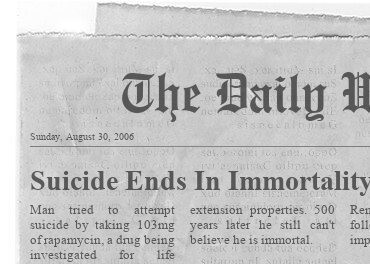I just read this article and someone tried to attempt suicide by taking 103mg of rapamycin. Well it didn’t work. Lol
Yes - rapamycin, by itself and in the short term, is very non-toxic. And David Barzelai has documented a person who’s gone much higher than this now without major issues.
But - if you do higher doses for a longer period of time you will start to lower your immune system, and there have been clinical trials of people dosing high levels (e.g. 10mg/day of the rapalog everolimus) and (because of the lowered immune system) got sepsis and died…
So its still something you need to be careful with (see below).
Complications of mammalian target of rapamycin inhibitor anticancer treatment among patients with tuberous sclerosis complex are common and occasionally life-threatening
The most common Adverse Effects (AEs) of everolimus therapy were laboratory abnormalities (100% of patients) and infection complications (83 episodes in 15 patients). Infectious episodes of pharyngitis (67%), diarrhea (44%), stomatitis (39%), and bronchitis (39%) were the most common infections. They were mostly mild or moderate in severity (grade 1–2).
In two cases, life-threatening conditions related to mTOR inhibitor treatment were encountered. The first was classified as grade 4 pleuropneumonia and Streptococcus pneumoniae sepsis, whereas the second was classified as death related to AE (grade 5) Escherichia coli sepsis.
A 27-year-old woman with TSC was started on everolimus
treatment because of AML of the left kidney
(60 Å~ 48 Å~ 36mm in size). The other signs of TSC were
facial angiofibroma, hypomelanotic macules of the skin,
and shagreen patch. The diagnosis of TSC was made
12 years earlier when the patient underwent nephrectomy
because of a large tumor of the right kidney. The
patient received everolimus at a dose 10 mg/day and the
trough concentrations of the drug ranged from 4.08 to
5.08 ng/ml. After 3 months of everolimus therapy, a
reduction in AML was observed (40 Å~ 31 Å~ 20mm in
size). During treatment, hypercholesterolemia (309 mg/
dl) and transient leukopenia (3.2 Å~ 109/l) with neutropenia
(1.34 Å~ 109/l) was observed. She also reported
oligomenorrhea. After a gynecological consultation, a
functional ovarian cyst was identified and contraceptives
were prescribed. However, 2 weeks later, she was
admitted to the gynecological unit because of subabdominal
pain and an ovarian cyst (64 Å~ 53mm in seize)
on ultrasound examination. Torsion of the ovarian cyst
was suspected. On the day of admission, WBC was
9.2 Å~ 109/l, the absolute neutrophil count (ANC) was
6.6 Å~ 109/l, the hemoglobin level was 10.8 mg/dl, the
PLT count was − 275 Å~ 109/l, and the C-reactive protein
concentration was 8.0 mg/dl (normal < 5.0 mg/dl). The
patient was advised to continue intake of contraceptives
and everolimus. The next day, the general condition of
the patient aggravated. Her blood pressure was low (85-
/50mmHg). Her WBC and ANC decreased (WBC
−2.4 Å~ 109/l, ANC − 1.8 Å~ 109/l), whereas the hemoglobin
level (11.0 g/dl), the PLT count (185 Å~ 109/l), and coagulation
tests were normal. Computed tomography of the
abdomen and pelvis showed AML of the left kidney (size
as in the previous examination), an ovarian cyst measuring
65 Å~ 50 Å~ 40 mm, and fluid in the retroperitoneal
space with density of the blood. Further aggravation of
her general condition was observed. The patient was
transferred to the ICU and she died after 2 h with
symptoms of shock and multiorgan failure. Blood and
urine cultures collected when she was in the ICU were
positive for Escherichia coli.
Full Paper here:
The attempt at suicide with 103mg has a plot of serum rapamycin vs time
Table 3 is particularly interesting as it implies a two compartment model of half life.
Table 3
Calculated pharmacokinetic parameters t1/2 = half-life, Vd/F = apparent volume of distribution, Cl/F = apparent clearance.
| 1st compartment* | 2nd compartment | |
|---|---|---|
| t1/2 (h) | 51.7 | 190 |
| Vd/F (L/kg) | 0.9 | - |
| Cl/F (L/h/kg) | 0.139 | - |
- The term “compartment” refers to a volume of body fluid into which a drug distributes. Examples of compartments include blood plasma, interstitial fluid and fat tissue.
Of all the things to try to use for this purpose…
We shouldn’t make a joke but it writes itself:
